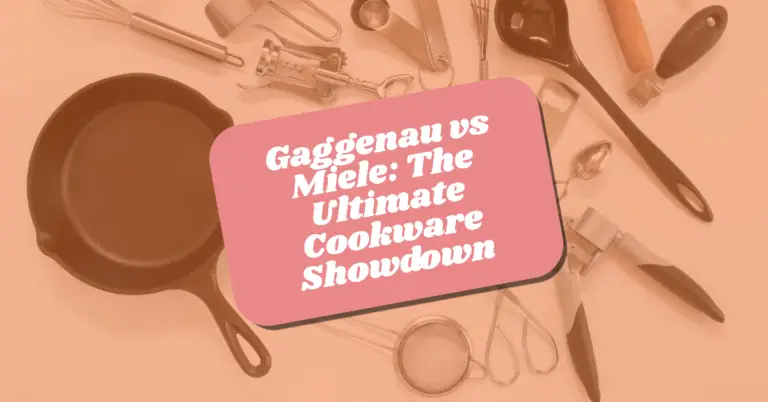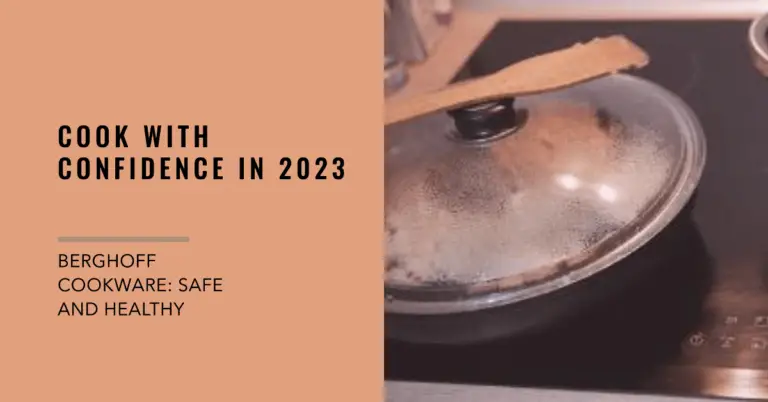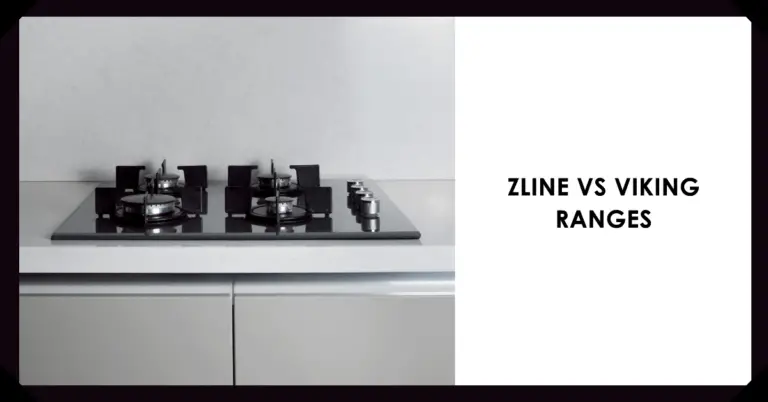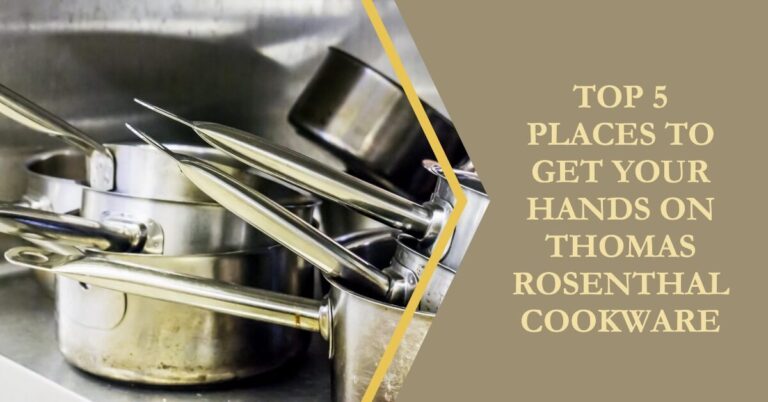Can You Use Ceramic Cookware on an Induction Cooktop?
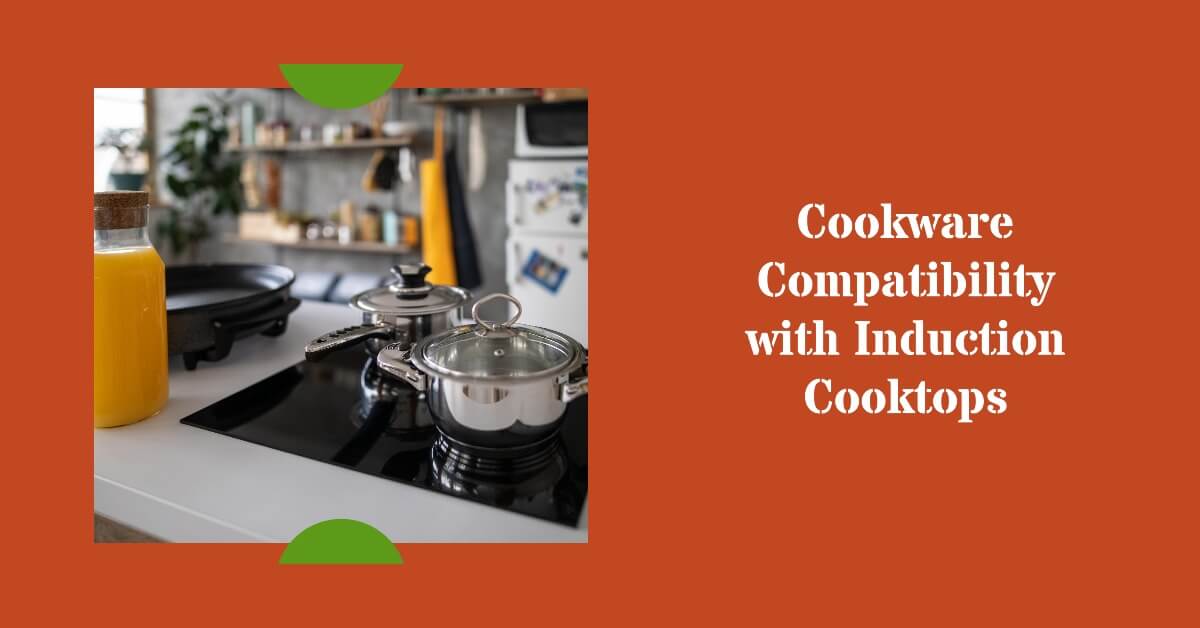
Ceramic cookware offers a great non-stick and scratch resistant cooking surface. But can these pots and pans be used on an induction cooktop?
The short answer is yes, you can use ceramic cookware on induction, but only if the pan has iron or steel in the base. Induction cooking requires cookware with ferromagnetic metal to create heat.
Read on to learn everything you need to know about using ceramic on induction, from testing pans to shopping for the best induction-ready ceramic cookware.
How Does Induction Cooking Work?
Induction cooktops and ranges heat pans very differently from traditional electric or gas stoves. They use electromagnetic energy to directly heat the pan itself.
An induction burner contains copper coils that produce a magnetic field when electricity passes through them. When you place ferromagnetic cookware on an induction burner, it becomes part of the magnetic circuit. This rapid movement of the iron molecules in the pan base creates resistance and quickly heats the cookware.
The cooktop surface remains cool to the touch. The heat is contained within the cookware. This makes induction very efficient and responsive for cooking.
Do Ceramic Pans Work on Induction Cooktops?
Ceramic cookware is noted for its durability, scratch resistance, and non-stick properties. Many home cooks love ceramic for its even heating and easy cleanup.
However, plain ceramic is non-magnetic and contains no iron that can react to induction’s magnetic field. So pure ceramic pans will not work on an induction cooktop.
Ceramic pans with a steel or iron plate built into the base are induction compatible. Many manufacturers now make ceramic pans with induction in mind by embedding metals that allow the cookware to heat up on induction burners.
Magnetic Ceramic Pans for Induction
Here are some examples of ceramic cookware collections that will work on induction ranges:
- GreenPan Levels Stackable Ceramic Frypan – The base is made of 18/10 stainless steel that makes it induction ready.
- Xtrema 10-Piece Set – These ceramic pans have a magnetic layer in the base to generate heat on induction.
- T-fal 10-Piece Ceramic Cookware Set – The ceramic coating is applied to an aluminum base on these pans.
- Cook N Home 10-Piece Ceramic Set – These pots and pans have an inner layer of aluminum sandwiched between the outer ceramic and base stainless steel.
As long as the manufacturer specifies that the cookware is induction ready, ceramic pots and pans that are built with a layer of magnetic metal will heat up on an induction burner.
Non-Magnetic Ceramic Cookware
However, not all ceramic cookware currently on the market will work on induction. Here are some examples of ceramic pans without iron that will not work on induction cooktops:
- Pure ceramic bakeware like lasagna pans or pie plates.
- Older ceramic coated pans without induction technology integrated in the base.
- 100% ceramic pots and pans like Redmond Clay Cookware or Xtrema skillets made entirely from ceramic without metal.
Plain ceramic pots, pans, and bakeware do not contain ferromagnetic materials induction requires to function. Look for induction ready or scan the product details to ensure the ceramic cookware you buy will work on induction ranges.
How to Test if Your Ceramic Pan Will Work on Induction?
If you’re not sure whether your current ceramic coated pans are induction compatible, there’s an easy way to find out.
Use a magnet to test if the base of the pan is magnetic:
- Hold the magnet up to the bottom of the pan.
- If the magnet sticks strongly and makes full contact, the pan WILL work on induction.
- If the magnet falls off or only sticks weakly, the pan likely does NOT have enough iron to work on induction.
The magnet test is the simplest way to check at home if your ceramic cookware has the ferromagnetic base induction requires to heat up.
Other Ways to Test Ceramic Pans for Induction
If you don’t have a magnet handy, there are a couple other methods you can try to determine if a ceramic pan will work on an induction burner:
- Listen for a hum – Turn on an induction cooker and slowly move the ceramic pan over the surface. If it makes a low humming sound, that means iron is detected in the pan base.
- Test for heat – Place the ceramic pan on an induction burner turned to a low or medium setting for 1 minute. If the pan heats up, it will work on induction.
- Check manufacturer info – Look at the packaging or product description for your ceramic pan. Most brands will specify if the cookware is induction ready.
Using a magnet to see if it sticks to the base is the fastest and easiest way to find out at home. But listening for a hum or doing a quick heating test can also indicate if a ceramic pan is induction compatible.
Tips for Cooking with Ceramic Pans on Induction
Once you’ve confirmed that your ceramic pans will work on an induction cooktop, here are some tips for cooking with them:
- Start on low heat – Ceramic coating can crack under too much heat stress. Bring pans to temperature gradually before turning up the heat.
- Use lower temp settings – Cook foods at medium or medium-low induction settings to prevent cracking or crazing in the ceramic surface.
- Don’t preheat empty – Don’t preheat ceramic pans while empty for long periods, which can damage the pan. Add oil first.
- Handle with care – Ceramic coating can chip if pans are dropped or banged on hard surfaces. Handle gently.
- Avoid metal utensils – Use wood, silicone or plastic utensils to prevent scratching ceramic interiors.
- Skip broiler – Don’t use ceramic pans under the high direct heat of an oven broiler, which can damage them.
With some care, your induction-ready ceramic cookware should provide great non-stick performance. Follow the manufacturer’s recommendations for using and caring for ceramic pans to extend their life.
Best Ceramic Cookware for Induction Cooktops
Here are reviews of some top-rated ceramic cookware sets that work great on induction ranges:
GreenPan Levels Stackable Ceramic Set
- Aluminum interior body with stainless steel induction base
- Durable Thermolon ceramic non-stick coating
- Frying pans, pots, grill pan, steamer included
- Oven and dishwasher safe
The GreenPan Levels set offers lightweight, stackable ceramic pots and pans designed for induction cooking. The riveted ergonomic handles stay cool while cooking. Hard anodized construction allows fast, even heating.
Xtrema 10 Piece Ceramic Set
- 100% ceramic construction with induction plates
- Versatile skillets, saucepans, and dutch oven
- Metal utensil and scratch resistant
- Easy to clean ceramic glaze
Xtrema cookware is made entirely from ceramic, even the handles. The included induction plates allow the pots and pans to heat up on induction burners. This set can safely go up to 2500°F.
Cook N Home NC-00359 Ceramic Set
- Aluminum core between steel and ceramic
- Tempered glass lids to monitor cooking
- Soft-touch silicone coated handles
- Oven and dishwasher safe
With an induction ready base and aluminum core for fast heating, these affordable Cook N Home ceramic pans are designed for induction ranges. The colorful exterior enamel resists scratches.
What to Look for When Buying Ceramic Cookware for Induction
When shopping around for the best ceramic cookware to use on your induction cooktop, look for:
- Induction ready base – This is a must! See if described as induction ready or check for metals like stainless steel or aluminum layered into the base.
- Thick ceramic coating – Thicker ceramic layers are more durable and resistant to scratches or crazing.
- Aluminum or copper core – Metals like aluminum and copper sandwiched between outer layers help with quick, even heating.
- Ergonomic handles – Handles should be comfortable to hold and stay cool during cooking. Silicone is ideal.
- Glass lids – Tempered glass lids make it easy to monitor cooking and maintain visibility.
- Oven and dishwasher safe – Multifunctional pans you can use for all cooking methods are most useful.
Investing in high quality ceramic cookware designed specifically for induction cooking provides the best experience and longest use.
How Ceramic Cookware Compares to Other Materials for Induction?
Ceramic pots and pans have some advantages and disadvantages compared to other common cookware types used on induction cooktops:
Stainless Steel
- Pro: More durable than ceramic. Can be used on all cooktops.
- Con: Not as non-stick. Requires more oil/butter for cooking.
Cast Iron
- Pro: Excellent heat retention. Can develop natural non-stick seasoning.
- Con: Very heavy. Slow heat conductor.
Copper
- Pro: Excellent conductor of heat. Responsive cooking performance.
- Con: More expensive. Requires frequent polishing.
Aluminum
- Pro: Affordable, responsive heat conductor. Induction compatible.
- Con: Can warp easier. Reactive to acidic foods.
Ceramic’s non-stick surface makes it easy to cook with little or no oil. And it’s generally lighter weight than other popular induction ready cookware. Just take care not to chip the coating.
Ceramic Cookware and Induction Cooking: Common Questions
Here are answers to some common questions people have about using ceramic pots and pans on induction ranges:
Can I use my old ceramic pans on a new induction cooktop?
Only if they have induction ready steel or iron built into the base. Older ceramic cookware is likely not compatible. Test with a magnet to be sure.
Why doesn’t my ceramic pan work on my induction range?
Pure ceramic with no metal does not contain iron to generate heat. The pan needs embedded metals like stainless steel or aluminum to work.
Is ceramic or copper cookware better for induction cooking?
Copper is more responsive and conductive. But quality ceramic pans designed for induction offer easier clean up and non-stick cooking. It depends on your needs.
Do ceramic pots and pans scratch induction glass cooktops?
No, ceramic will not scratch the glass surface as long as the bottom is smooth without rough edges. Always lift pans instead of sliding.
Can I use a induction interface disk with regular ceramic pans?
Yes, interface disks create a magnetic field to allow non-magnetic pots and pans to work on induction. But cooking performance may be compromised.
The Bottom Line – Use Magnetic Ceramic Pans on Induction
Ceramic pots and pans offer attractive non-stick cooking performance. But they must contain iron in order to function on induction cooktops and ranges.
Confirm that a ceramic pan is induction ready by doing the magnet test. Look for descriptions of steel or aluminum layers in the base that generate heat.
With quality induction-compatible ceramic cookware, you get the easy release and clean up of ceramic with the precision and responsiveness of induction cooking.


